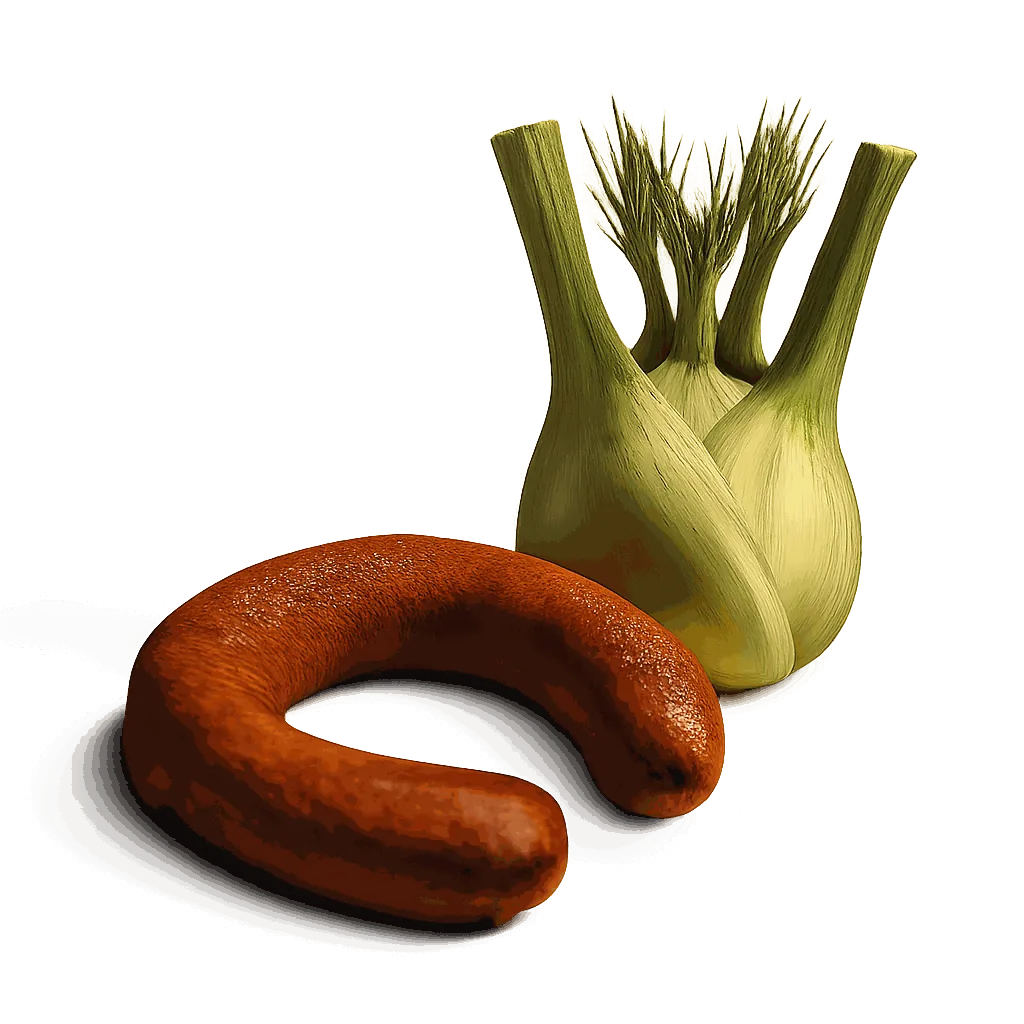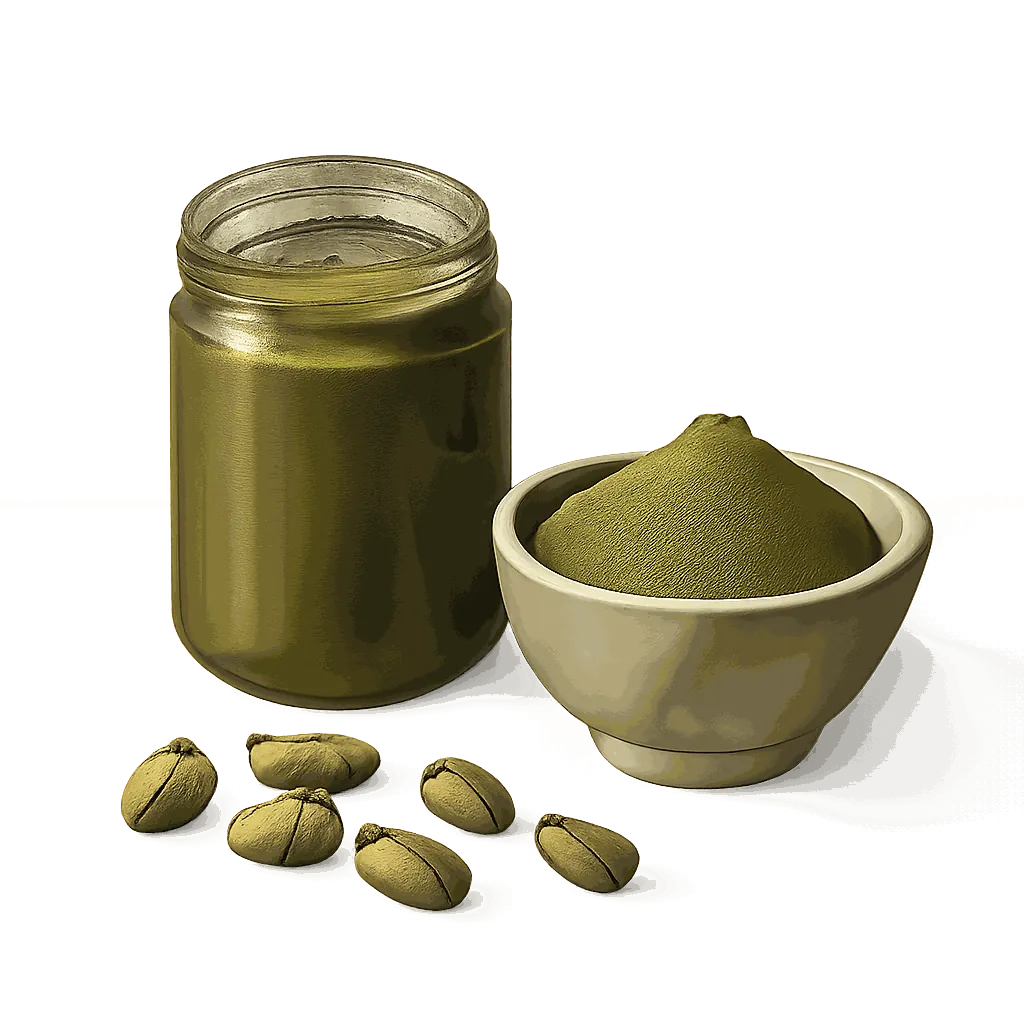Perfect Pairings & Recipes for
Junmai Kijoshu

Top flavour pairings and recipes for junmai kijoshu, according to analysis of thousands of recipes.
Junmai kijoshu immediately conjures the evocative embrace of caramel and the kiss of honey, but beneath its sweetness lies a complex symphony of subtle flavour notes, such as apricot, rice, and hints of maple that contribute remarkable depth. Understanding how these elements interplay is the secret to unlocking truly exceptional pairings.
To map these harmonies, we analysed thousands of ingredients, breaking each one down across 150 flavour dimensions, identifying which notes complement and contrast. Our exploration reveals, for instance, how the umami, savory monosodium glutamate in enoki mushroom can enrich junmai kijoshu, and how wasabi's brassica notes forge a beautiful synergy with its warm sweetness.
Flavour Profile Of Junmai Kijoshu Across 150 Dimensions Of Flavour
Flavour wheel chart showing the dominant flavour notes of Junmai Kijoshu: Caramel, Honeyed, Apricot, Molasses, Maple, Rice, Proteolytic, Oxidized, Vanillic, Raisin, Maltol, Sugary, Ficus, Lactic, Cinnamon, Hazelnut, Toasted, Tea-Like, Chestnut, Yeasty, Glutamic, Peach, Safranal, Ginger, Oaky, Pear, Malic, Plum, Clove, Tannic, Coconut, Buttery, Resinous, Balsam, Acetic, Brettanomyces, Neroli, Blossom, Coriander seed, Allspice, Astringent, Almond
An ingredient's flavour profile is determined by its core characteristics (e.g. maillard, floral, and nectarous) enhanced by layers of subtle aroma notes (outer bars). When pairing ingredients, aim for a mix of core traits to build balance, and select complementary aroma notes to create harmony.
Flavour Pairing Method
To understand how flavour notes harmonise, we analysed more than 50,000 popular ingredient combinations. By exploring these pairings, we identified specific flavour notes that frequently occur together, indicating they share a harmonious relationship.
The Flavours That Harmonise With Caramel Notes
Strength of Association Between Flavours
The flavours most associated with caramel notes are: Brassica, Rosemary, Peppercorn, Sage, Petrichor, Camphor, Chanterelle, Mustard, Grassy, Bay leaf, Leafy, Dried Porcini, Ferrous, Eucalyptus, Thyme.
Our analysis shows that the flavour of caramel is strongly associated with the flavour of cabbage. This suggests we should look for ingredients with a cabbagy flavour, such as wasabi, when pairing with the caramel aromas of junmai kijoshu.
The recipes below provide inspiration for pairing junmai kijoshu with wasabi.
Harmonious Flavours Of Junmai Kijoshu
Just as our analysis indicated that caramel and cabbagy flavour accents combine harmoniously, we can identify the full profile of flavours that harmonise with each of the flavours present in junmai kijoshu. For instance, the honeyed notes of junmai kijoshu are strongly associated with milky and cedar flavours.
The aroma notes complementary to the various aroma accents of junmai kijoshu can be seen highlighted in the pink bars below.
Flavour Profile Of Junmai Kijoshu And Its Complementary Flavour Notes
Flavour wheel chart showing the dominant flavour notes of Junmai Kijoshu: Caramel, Honeyed, Apricot, Molasses, Maple, Rice, Proteolytic, Oxidized, Vanillic, Raisin, Maltol, Sugary, Ficus, Lactic, Cinnamon, Hazelnut, Toasted, Tea-Like, Chestnut, Yeasty, Glutamic, Peach, Safranal, Ginger, Oaky, Pear, Malic, Plum, Clove, Tannic, Coconut, Buttery, Resinous, Balsam, Acetic, Brettanomyces, Neroli, Blossom, Coriander seed, Allspice, Astringent, Almond
Matching Flavour Profiles
The flavour profile of enoki mushroom offers many of the accents complementary to junmai kijoshu, including glutamic and grassy aroma accents. Because the flavour profile of enoki mushroom has many of the of the features that are complementary to junmai kijoshu, they are likely to pair very well together.
Prominent Flavour Notes Of Enoki Mushroom Are Represented By Longer Bars
Flavour wheel chart showing the dominant flavour notes of Enoki mushroom: Glutamic, Grassy, Fungus, Chlorophyll, Sugary, Honeyed, Blossom, Cucumber, Starch, Jasmine, Celery, Petrichor, Hay
The chart above shows the unique profile of enoki mushroom across 150 dimensions of flavour, while the recipes below offer inspiration for bringing these flavours together with junmai kijoshu.
Recipes That Pair Junmai Kijoshu With Enoki Mushroom
Linked Flavour Notes
Looking at the aroma accents that are most strongly associated with the various flavours of junmai kijoshu, we can identify other ingredients that are likely to pair well.
Junmai Kijoshu's Harmonious Flavours And Complementary Ingredients
Junmai Kijoshu's Strongest Flavours
Complementary Flavours
Ingredients with Complementary Flavours
Flavour groups:
Nectarous
Acidic
Floral
Herbal
Spice
Vegetal
Maillard
Earthy
Woody
Carnal
The left side of the chart above highlights the aroma notes of junmai kijoshu, along with the complementary aromas associated with each note. While the right side shows some of the ingredients that share many of the aroma accents complementary to junmai kijoshu.
Prominent Pairings
Our analysis identifies dishes that pair well with junmai kijoshu and highlights the prominent ingredient combinations within these recipes. Key pairs include shiso and mirin offering warm sweetness, honjozo and carrot for sweetness, shrimp and rice flour for oryzan depth, and whole milk and caster sugar for a complex saccharine undertone. Explore these combinations to unlock junmai kijoshu's hidden complexity, reveal deep nuance, and elevate its vibrant character.
Ingredient Combinations Among Dishes That Pair With Junmai Kijoshu
Flavour groups:
Sweet
Sour
Botanic
Herbal
Spice
Bitter
How Flavonomics Works
We've pioneered a unique, data-driven approach to decode the intricate art of flavour pairing. Our goal is to move beyond intuition and uncover the science of why certain ingredients harmonise beautifully. This rigorous methodology allows us to provide you with insightful and reliable pairing recommendations.
Our analysis begins with over 50,000 carefully selected recipes from acclaimed chefs like Galton Blackiston, Marcello Tully, and Pierre Lambinon. This premium dataset ensures our model distils genuine culinary excellence and creativity.
Each ingredient from these recipes is deconstructed across 150 distinct flavour dimensions, creating a unique numerical "flavour fingerprint." This quantification allows us to apply advanced analytical methods to identify complex patterns between flavour notes.
We identify popular ingredient combinations that frequently appear in our recipe database. Regression analysis is then performed on these pairings to statistically validate and pinpoint truly harmonious flavours.
These insights drive our predictive model, which allows us to take any ingredient (e.g., Junmai Kijoshu), analyse its detailed flavour profile, and accurately reveal its complementary flavours and perfect ingredient partners.
Explore More
Discover more ingredient profiles and expand your culinary knowledge. Each ingredient page offers detailed analysis of flavour profiles, pairing insights, and culinary applications.
The content on our analysis blog is semi-automated. All of the words were manually written by a human, but the content is updated dynamically based on the data.


